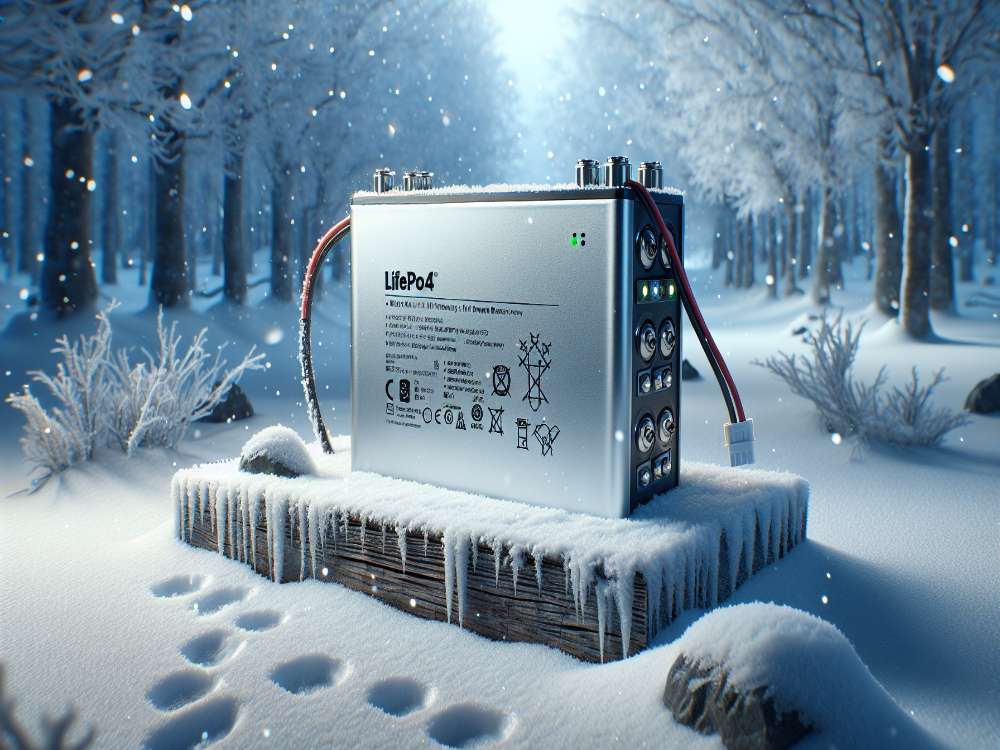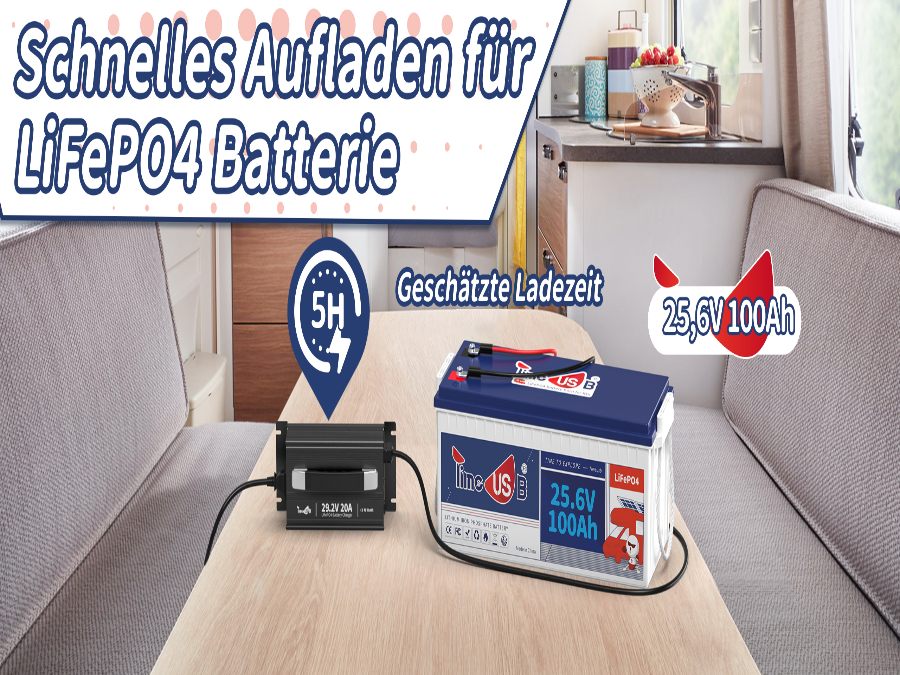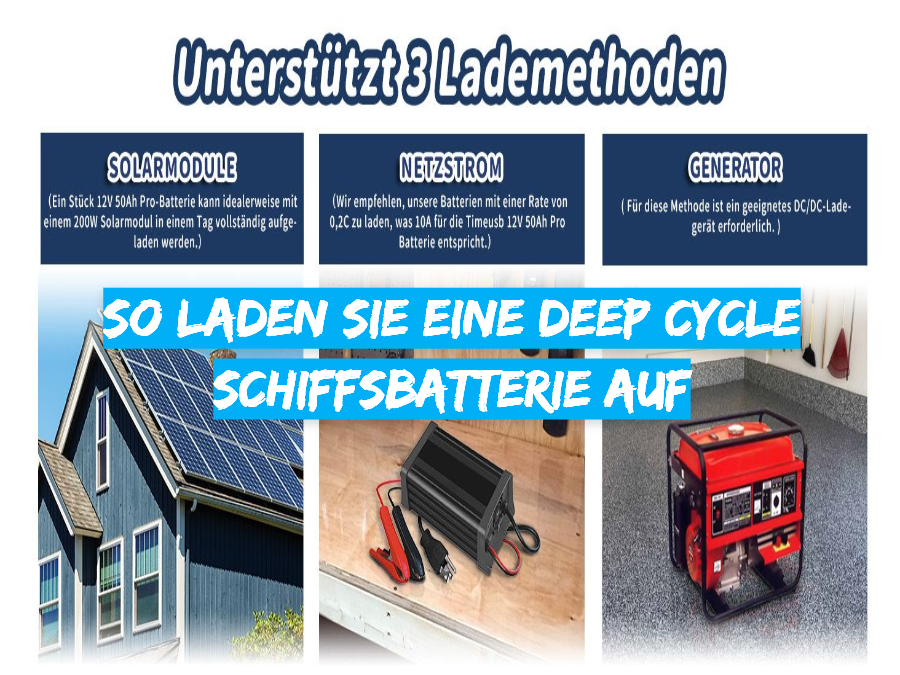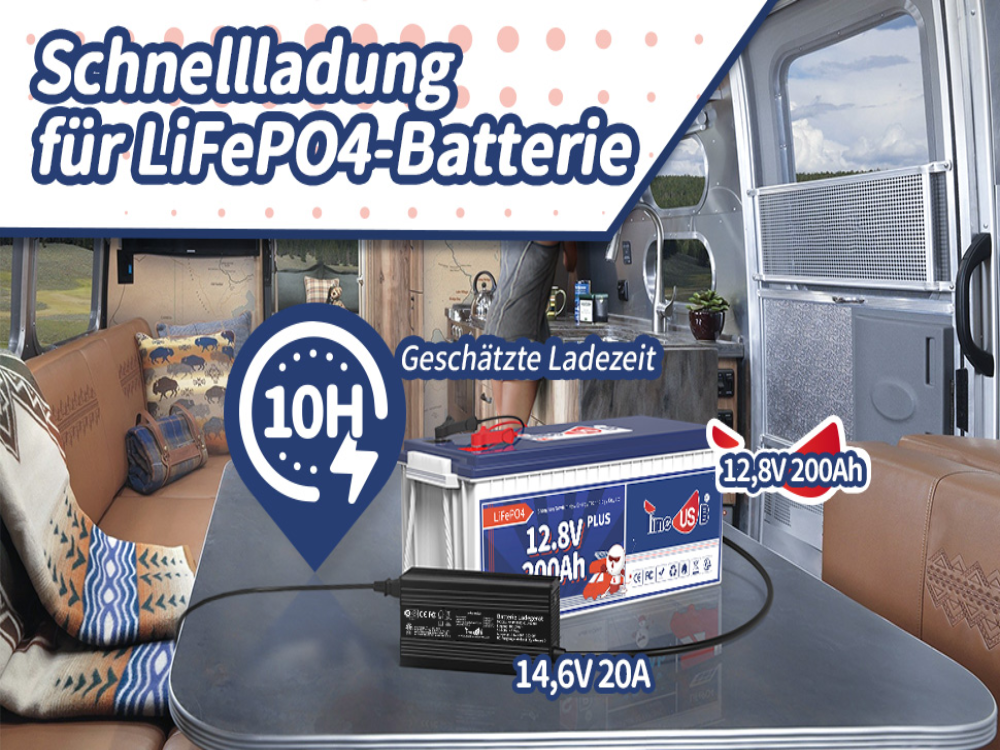Can lithium batteries freeze? Why is protection from low temperatures important for LiFePO4?

When it comes to highly efficient energy storage, Lithium iron phosphate batteries (LiFePO4) are often in the foreground due to their stability, safety and longevity. However, operating in extreme temperature conditions, particularly in the cold, raises legitimate concerns about their performance and lifespan. This brings us to an important question: Can lithium batteries freeze?
Understanding the effects of low temperatures on LiFePO4 batteries and the importance of cold protection is critical to both the longevity of the battery and the efficiency of the device or vehicle it powers.
Can LiFePO4 batteries freeze?
LiFePO4 batteries are designed to withstand different temperature ranges, but like all batteries, they have their limitations. Technically speaking, LiFePO4 solar batteries do not “freeze” in the traditional sense because they do not contain liquid electrolytes that turn into ice. However, at temperatures below 0°C (32°F), the chemical reactions within the battery may slow significantly, resulting in reduced efficiency, reduced power output and possible long-term damage if the battery is forced to operate or charge these conditions.
The influence of low temperatures on the efficiency of lithium batteries
Lithium batteries can be particularly affected by cold climates. Low temperatures cause the battery's electrolyte solution to become more viscous, which in turn restricts the flow of ions and slows chemical reactions within the battery. As a result, the capacity of the battery decreases, the power it can deliver decreases and the internal resistance increases. Especially in extreme cold, this can result in the battery not reaching its maximum capacity and possibly shutting down without warning.
In addition, frequent exposure to cold temperatures can accelerate battery wear and shorten its expected lifespan. Therefore, it is important to develop protection strategies and implement measures designed for low temperature environments to ensure that lithium batteries maintain optimal functionality and durability even in colder conditions.
Temperature limitations on lithium battery performance
When using lithium batteries in devices that operate under different thermal conditions, recognizing the temperature limitations is critical. Lithium batteries perform optimally when discharging in a core temperature range of approximately -20°C to 60°C (-4°F to 140°F). When charging, it is important to maintain the temperature between 0°C and 55°C (32°F to 131°F) to avoid safety risks. Charging outside these limits can lead to dangerous consequences such as battery explosion or irreversible battery damage.
Here is a quick guide to the thermal limits for lithium batteries:
- Operating Temperature Range: Generally, lithium batteries can be used safely within a range of -20°C to 60°C (-4°F to 140°F). They are designed to perform effectively within these limits.
- Charging temperature range: Optimal charging occurs between 0°C and 45°C (32°F to 113°F). Charging within this window promotes efficient energy consumption and helps avoid potential problems. Learn more about how to charge a LiFePO4 lithium battery.
- Storage temperature range: For storage, it is recommended to keep lithium batteries at a mild temperature range of about -10℃ to 50℃ (14℉ to 122℉). This area helps maintain the charging capacity and longevity of the battery. For more information, see our comprehensive guide to storing LiFePO4 batteries.
Note that these are general recommendations and specific lithium battery variants or manufacturers may provide different operating and charging temperature guidelines.
In addition, it is important to point out the dangers of charging lithium batteries outside the recommended temperature ranges. Charging in excessively cold conditions can inhibit chemical activity, resulting in permanent loss of capacity, whereas charging in excessive heat can result in overheating, thermal runaway, and combustion. For the most accurate temperature-related instructions, it's always best to follow your battery's manufacturer's instructions.
What is the low temperature protection for LiFePO4 lithium batteries?
Low temperature charge protection is a safety feature for lithium iron phosphate (LiFePO4) batteries designed to prevent charging under conditions that could harm the health and longevity of the battery, especially when the ambient temperature is too low.
LiFePO4 batteries – and lithium batteries in general – are sensitive to extreme temperatures. Charging at low temperatures can result in lithium plating on the anode. This is a condition in which lithium ions do not intercalate (intercalate) properly into the anode material, but instead form metallic lithium on the surface of the anode. This coating can permanently reduce the battery's capacity and pose a safety risk.
This is how charging protection works at low temperatures:
- Temperature sensors: The battery management system (BMS), an electronic system that monitors and regulates the operation of the battery, includes temperature sensors that detect the temperature of the battery cells.
- Resuming normal operation: When the sensors detect that the ambient or cell temperature has fallen below a set threshold (typically around 0°C or 32°F), the BMS automatically prevents charging the battery.
- Automatic pause: The BMS allows charging to resume once it detects that temperatures have risen back to a safe charging range.

To circumvent the problems associated with low temperature charging, manufacturers sometimes incorporate heating systems either into the battery or as an external feature to bring the battery's temperature to a safe charging range before the charging cycle can begin.
Why is charging protection at low temperatures so important for LiFePO4 lithium batteries?
Low temperature charging protection is critical for LiFePO4 (lithium iron phosphate) batteries for the following reasons:
Risk of lithium coating
Charging LiFePO4 batteries at low temperatures can result in lithium plating, a condition in which lithium ions do not intercalate into the anode but form metallic lithium on its surface. This reduces the number of lithium ions available for charging and discharging, effectively reducing the capacity and useful life of the battery.
Security concerns
Metallic lithium is highly reactive and can pose safety risks, including short circuits that can lead to battery failure or even thermal runaway - a condition that can potentially lead to fire or explosion.
Battery Life
Continuous charging at low temperatures causes deterioration of the electrodes within the battery, resulting in a shortened lifespan. This means the battery will not last as long as it is designed to and requires early replacement.
Performance assurance
LiFePO4 batteries are known for their stable performance and long-term reliability. Low temperature charging protection is critical to maintaining these characteristics and ensuring the battery performs optimally over its intended lifespan.
Energy efficiency
When a battery is charged at low temperatures, increased internal resistance may occur, requiring more energy to reach the same state of charge, thereby reducing overall energy efficiency.
Compliance with legal regulations and standards
Safety standards for lithium batteries may require the establishment of such protection mechanisms to ensure the safety of consumers and the functionality of the system in which the batteries are used.
Maintenance of the guarantee
Some manufacturers may void the warranty if the battery is found to have been charged under conditions other than specified operating guidelines, including temperature specifications.
Ease of use
The protection system automates battery care, relieving the user of the need to constantly monitor outside temperatures before and during charging cycles.
For encapsulation, cryogenic charge protection systems are not just a protective measure; They are an essential component that maintains the reputable safety profile, longevity and performance of LiFePO4 batteries. Given their increasing application in critical environments such as electric vehicles, renewable energy storage and portable electronics, ensuring the safe and effective operation of these batteries is of paramount importance.
The use of batteries for winter conditions is strongly recommended
Timeusb 12V 140Ah LiFePO4 Battery is equipped with an advanced 100A BMS (battery management system) to protect against excessive charging, discharging, over-current and short circuits as well as extreme temperatures.
It features an under-temperature shutdown that stops charging when the cell temperature falls below 32℉ (0°C) to prevent damage.

This 12V 140Ah lithium battery consists of automotive-grade cells arranged in an optimal configuration. It is designed to hold up to 15.000 deep cycles with a lifespan of over 10 years, ensuring reliable and long-lasting performance.
This 12V 140Ah lithium battery uses high-quality, automotive-grade cells that are designed for maximum efficiency. It has a capacity for up to 15.000 deep cycles and an expected lifespan of over a decade, promising reliable and continuous operation.
The device has an exceptional energy density of 64.23 Wh per pound and is remarkably light at just 27.9 pounds - an impressive contrast to the heavier 12V100Ah lead-acid batteries, which typically weigh around 55 pounds and effectively an equivalent Offer storage capacity for half the weight.
FAQs about low temperature protection
1. What is the low temperature protection for LiFePO4 batteries?
Cryogenic protection is a safety feature that prevents a LiFePO4 battery from charging when the ambient temperature falls below a certain threshold, typically around 0°C (32°F). This feature is crucial to prevent damage to the battery cells that can occur if they are charged at temperatures that are too low.
2. Why can't LiFePO4 batteries be charged at low temperatures?
Charging LiFePO4 batteries at low temperatures can result in lithium plating on the anode, which can permanently reduce battery capacity and pose significant safety risks, including the possibility of short circuits or thermal events.
3. How does the cold protection work?
The under-temperature protection works through the use of temperature sensors that are integrated into the battery management system (BMS). If the sensors detect temperatures below a set threshold, the BMS prevents the charging circuit from activating and prevents the battery from accepting a charge until temperatures return to a safe range.
4. At what temperature is the cold protection normally activated?
The activation temperature for under-temperature protection varies depending on battery design and manufacturer specifications, but is typically around 0°C (32°F).
5. Can I disable the low temperature protection if I need to charge my battery in cold weather?
No, you should not disable the low temperature protection. This feature is critical to the safe operation and long-term health of your LiFePO4 battery. Attempting to charge the battery in cold weather without this protection could result in irreversible damage or safety risks.
6. Does cold protection affect the discharge of LiFePO4 batteries?
The cold protection primarily affects the charging process. Most LiFePO4 batteries can be safely discharged at temperatures lower than they can be charged, but performance may be limited. Always check the manufacturer's specifications for safe discharge temperatures.
7. What happens if the LiFePO4 battery is accidentally charged at a temperature below the safety threshold?
If a battery is charged below its safe temperature threshold, there is a risk of lithium plating, which can permanently reduce its capacity and lifespan, increasing the risk of failure or even causing a short circuit, potentially leading to a fire or explosion.
8. How do I ensure my LiFePO4 battery stays within a safe temperature range?
To ensure a safe temperature range, store and operate the battery in environments that are within the manufacturer's specified temperature limits. If necessary, use insulation, electric blankets, or temperature-controlled environments to maintain the battery at safe operating temperatures.
Conclusion
While LiFePO4 batteries may not literally freeze, it is abundantly clear that low temperatures can negatively impact battery function and longevity. Implementing low-temperature protection measures is not just about protecting the battery itself; It's about ensuring the safety, reliability and efficiency of the entire system that powers the battery, whether it's an electric vehicle, renewable energy storage or critical backup power.




